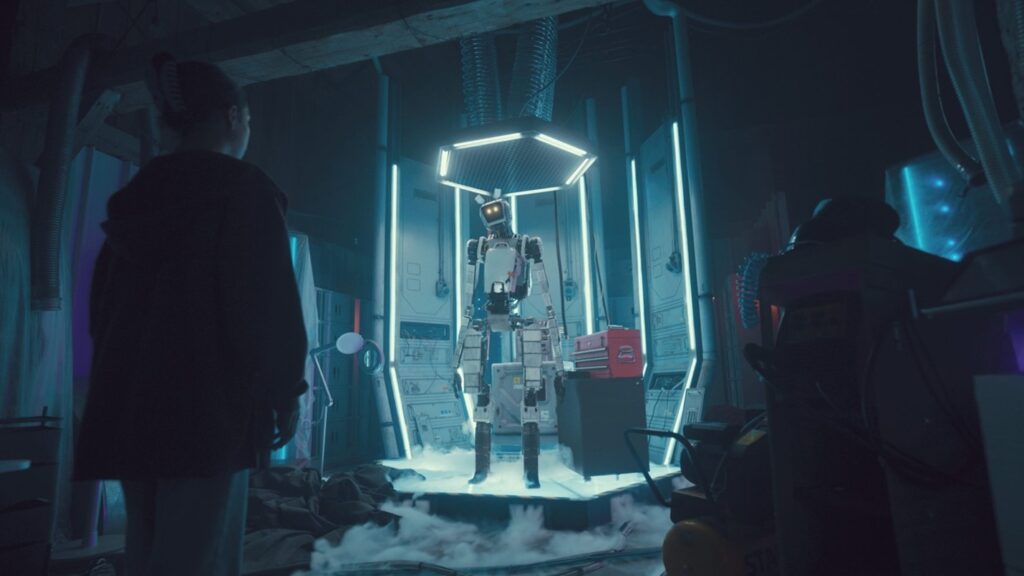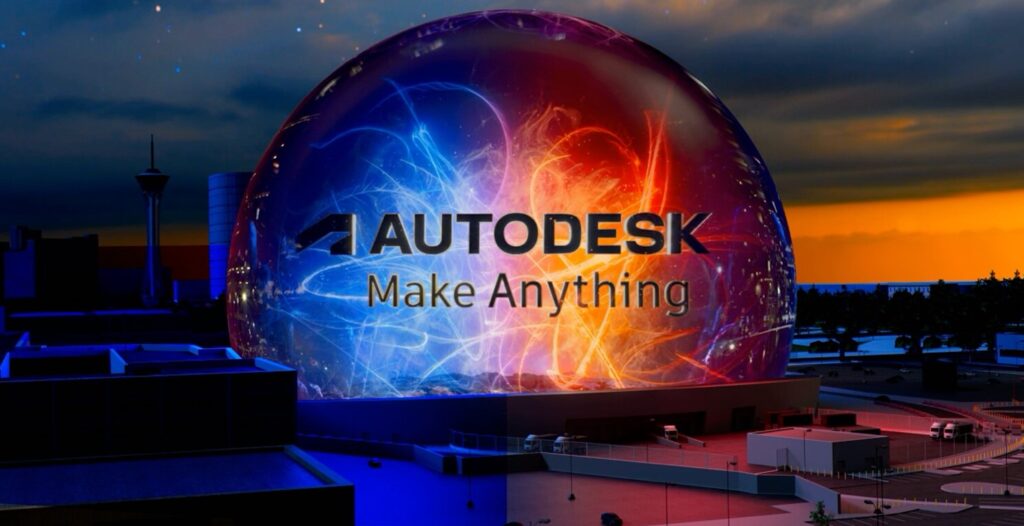For the past few years, Autodesk has been positioning itself to revolutionize creative workflows. For the media and entertainment industry, it has taken steps to embrace open source. It has also pushed workflow to the cloud, culminating in the release of the M&E industry cloud, which it calls Flow, at the recent Autodesk University Design and Make conference. The goal of Flow is to open collaboration among the many stakeholders working across the vast media and entertainment production pipeline. Flow is built with open APIs and connects the entire production pipeline on one platform. Flow’s aim is to link all stages of production and unite creators, data, and their workflows.

What do we think? Autodesk’s plan for Flow, as well as for its other two industry clouds announced a year ago, is ambitious. But then again, this is a different world for creatives and makers than it was a decade or so ago. As demands for more of everything have become constant, those working in M&E need to keep up. To do so, they need to streamline their processes and make better use of their time. Ferreting through mounds and mounds of files to find an asset is not a good use of time. Autodesk has a vision that unites creatives throughout all aspects of production. It’s a great idea—as long as others buy into their vision (creators like the tools they use, and they are not always from Autodesk). Right now, some large DCC companies have joined this endeavor. But, it will take more of them (details about the CAD market and its players can be found in our CAD report). These are early days for Flow, so that may indeed happen.
Autodesk launches Flow for connecting production workflows
As we heard from the leadership at Autodesk University 2023 last week, the unveiling of the Autodesk industry clouds during AU 2022 was an initial step, albeit a very big one, in the company’s longer journey leading to connected workflows and AI, achieved through Autodesk AI, released during this year’s event. A year ago, the company introduced three industry clouds—Flow for M&E, Fusion for D&M, and Forma for AEC, all part of the Autodesk Platform—connecting all project data with a seamless pipeline that all stakeholders can use.
One of those clouds had a head start compared to the other two. The Fusion model in its earlier form launched a decade ago with the vision of unifying the siloed product design and manufacturing process. Autodesk continues to grow Fusion, digitally connecting data and making it available to everyone involved in a project throughout its life cycle.
Fusion integrates CAD, CAM, CAE, and PCB design capabilities, and connects PLM, PDM, and MES solutions. “We were the first to introduce generative design for manufacturing in Fusion more than six years ago. We are now unlocking all kinds of opportunities to automate repetitive processes, analyze shop floor operations, and augment creativity using AI,” says Jeff Kinder, EVP of Product Development and Manufacturing Solutions at Autodesk.
Meanwhile, Forma got its coming-out party in May of this year. This first iteration is heavily focused on early-stage planning and exploration of design concepts, with the goal of unifying workflows across teams that design, build, and operate across the AEC industry. Forma is based on the Spacemaker architecture that Autodesk acquired three years ago. Since Autodesk launched Forma, the team has shipped more than 72 significant updates to this industry cloud through this past September.
Nevertheless, Autodesk University 2023 did serve as a launchpad for Flow, the company’s M&E cloud data model, which, like the other Autodesk industry clouds, focuses on open collaboration—in this instance, for those working across the vast media and entertainment production pipeline. Flow is built with open APIs and connects the entire production pipeline on one platform. This is no small feat, as a feature film today can easily contain hundreds, and even a thousand or more, VFX shots alone, created by thousands of people using a wide range of tools that store data using different methods and in different places. And that is just one segment of this workflow. To solve this issue of fragmented data, Autodesk has created Flow, which links all stages of production and unites the creators, data, and their workflows.
Flow lets users capture, reuse, and track data, serving as a single source of truth for all the assets, versions, and feedback in a production, no matter which tools and whose tools you use. Artists no longer have to wait for individuals or departments to finish work before they can proceed, as everyone in the pipeline simultaneously can work on tasks. And with Flow, users will always know the current and previous states of every asset related to the production.
“Our goal is to provide an open ecosystem on the Autodesk platform that connects to different phases of the production life cycle. Flow will leverage open standards like Universal Scene Description to ensure interoperability,” said Diana Colella, Autodesk EVP, Media & Entertainment.

Autodesk is building Flow to support media and entertainment in making production simpler, more efficient, more collaborative, and, ultimately, more creative. At the heart of Flow is a robust M&E data model created specifically for the needs of this industry. It manages all the files, no matter where they are stored—on-prem or in the cloud—and can represent all media, all files, and metadata created during production .
Flow utilizes various Autodesk tools used in the production pipeline, which have new names within the platform: Moxion is known as Flow Capture (a cloud-based digital dailies and review tool that tracks data and supports collaboration during a shoot), and ShotGrid is called Flow Production Tracking (for facilitating production management input). The platform uses these two tools to connect on-set and postproduction data to the M&E data model for seamless collaboration, immediate sharing of data, and complete management of all assets from camera to post. Starting with Autodesk’s Maya, the open ecosystem will support Autodesk’s own content creation tools; Autodesk is also working with companies including SideFX, Avid, and Foundry to enable third-party software to plug in to the platform as well, with more partners to come. Autodesk even tested Flow’s capabilities on a real-world short film it created while building Flow.
According to Autodesk, eventually the entire production pipeline will be linked, extending beyond postproduction to all other areas of the production pipeline, making production simpler, more efficient, more collaborative, and, ultimately, more creative. With everyone connected through Flow, they’ll always be on the same page, says Autodesk. There will be no confusion about where anything is and what needs to be done.
By using data in a connected environment, Autodesk says there will be more opportunities to use artificial intelligence as a force for automation and productivity. As part of full production tracking, Autodesk will be including a new Flow service that’s currently in beta. It’s called Generative Scheduling and is an AI-powered analysis tool for production managers that significantly cuts down the time it takes to predict, plan, and rightsize resources. This becomes especially valuable when it comes to determining the schedule and budget impact of last-minute change requests on a single production as well as across the facility’s entire workload.
However, there is a lot more to Flow than just the data model and asset management systems, says Mimi Hoang, VP of Autodesk Production Management and Platform. “We want to make it easier to work with assets and pipelines by letting artists use visual interfaces to make it simpler to search, view, or track assets. It’ll also be easier to program pipeline actions with software-defined workflows, which are critical. They automate mundane tasks. They give you a way to visualize, combine, or connect complex production processes in your pipeline,” she said during the M&E Industry Forum at AU 2023.
Moreover, Flow is built on a platform that Autodesk and others can expand and extend over time to meet every production need.
The key to Flow is connecting not just different tools and teams, but also different parts of production, especially parts that have been historically siloed, such as film production units and visual effects teams. So, perhaps it is not surprising, then, that one of the first workflows Autodesk is enabling with Flow is connecting on-set with post.
Autodesk is also working with outside companies to provide users with the latest in AI innovation. With Flow, users will be able to connect generative AI capabilities like Generative Scheduling seamlessly to the connected pipeline. Moreover, Autodesk AI automates tedious and repetitive tasks and analyzes project data to offer predictive insights. “In Maya, AI-assisted workflows will allow artists to use natural language text prompts to manipulate scenes; this automates tedious but necessary tasks, like adding a spotlight, reducing its intensity, or adjusting camera angles, freeing up artists to do more of the artistic work,” Hoang stated.
Autodesk is also working with outside companies to provide users with the latest in AI innovation. For instance, Wonder Dynamics recently announced Maya integration so AI can be used to automatically animate, light, and compose CG characters in a live-action scene. With the new Maya plug-in, Maya users can seamlessly export CG characters from Maya into Wonder Studio. Artists also will be able to export 3D scenes with animation, camera, and lighting data out of Wonder Studio and back into Maya, with full creative control of each individual element. While studios with large budgets have performed this type of complex workflow before, automation is now opening it up so studios of all sizes can do it, too.
“With Flow, we want to have our industry become more sustainable, more resilient, more efficient, and, more importantly, infinitely creative,” said Maurice Patel, Autodesk vice president of M&E Strategy.